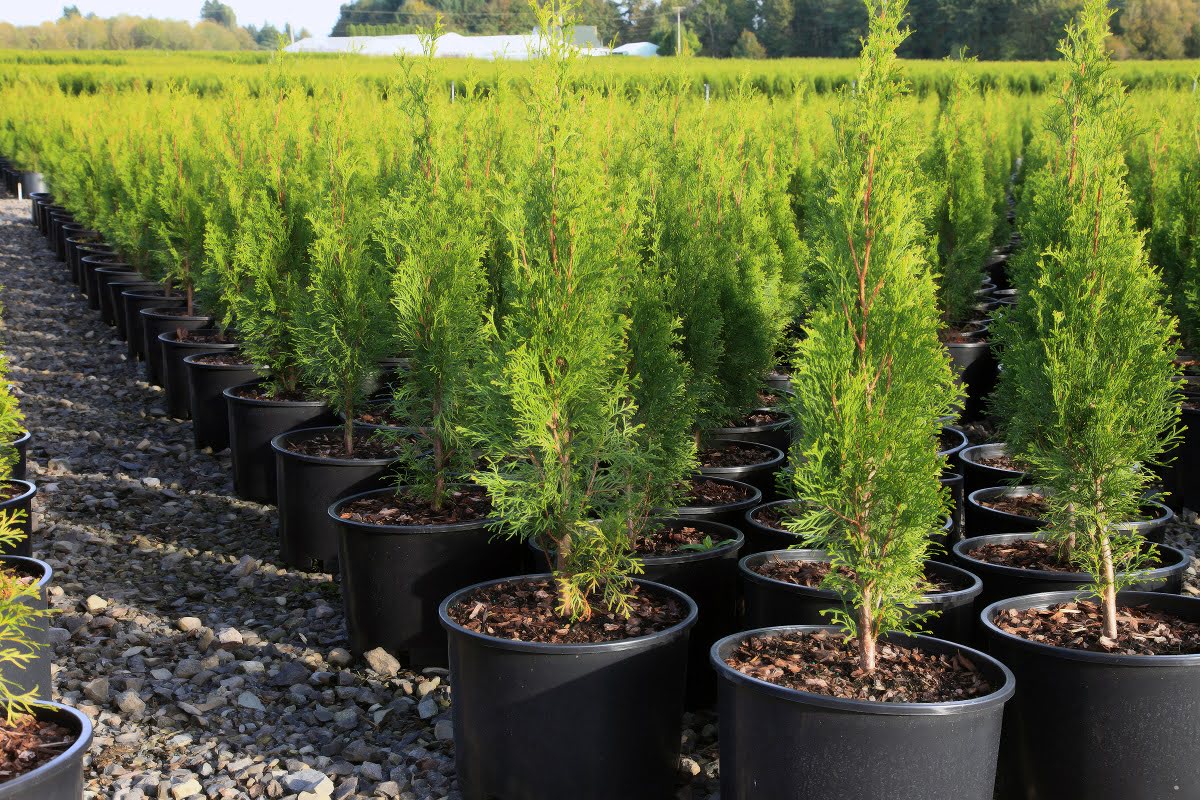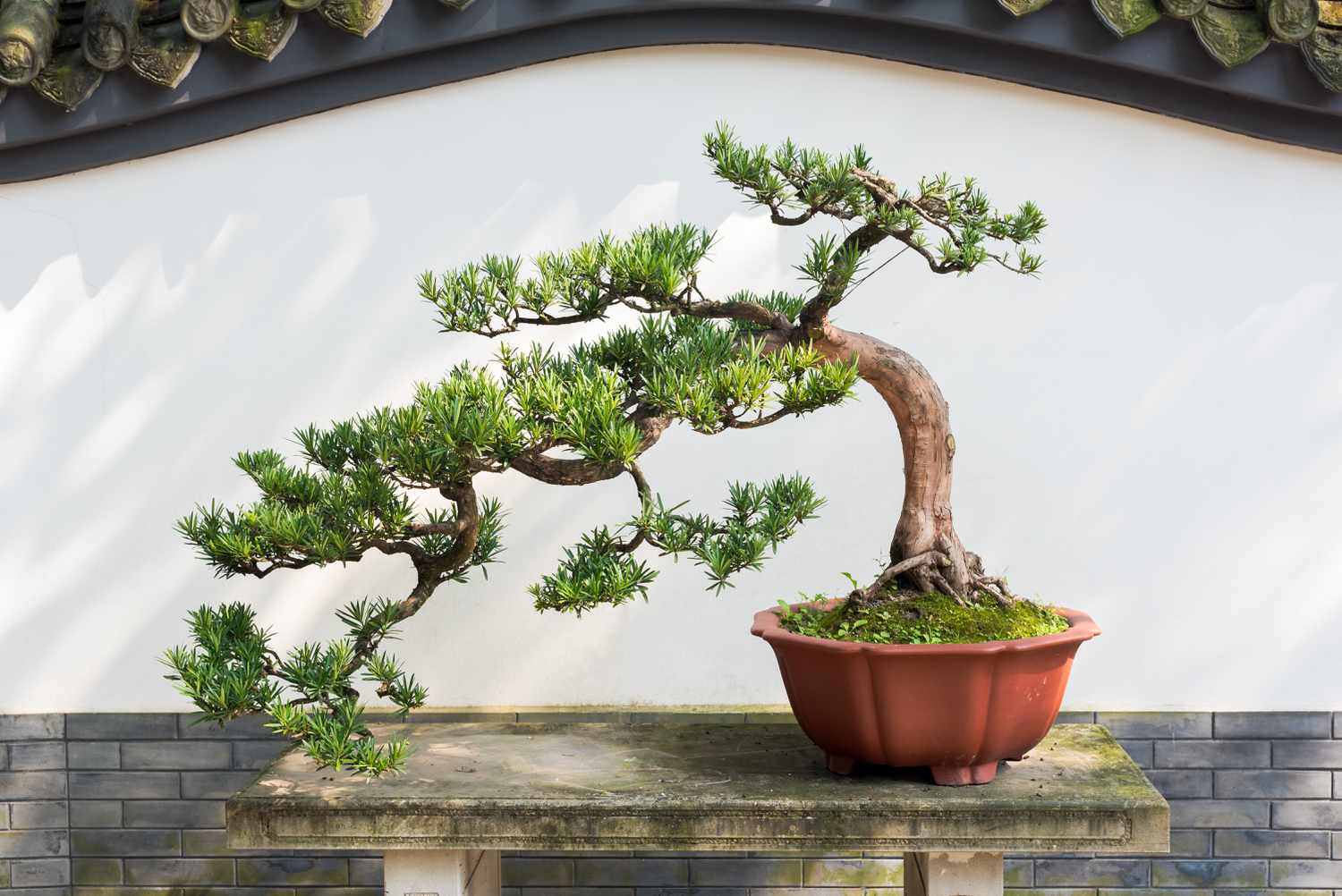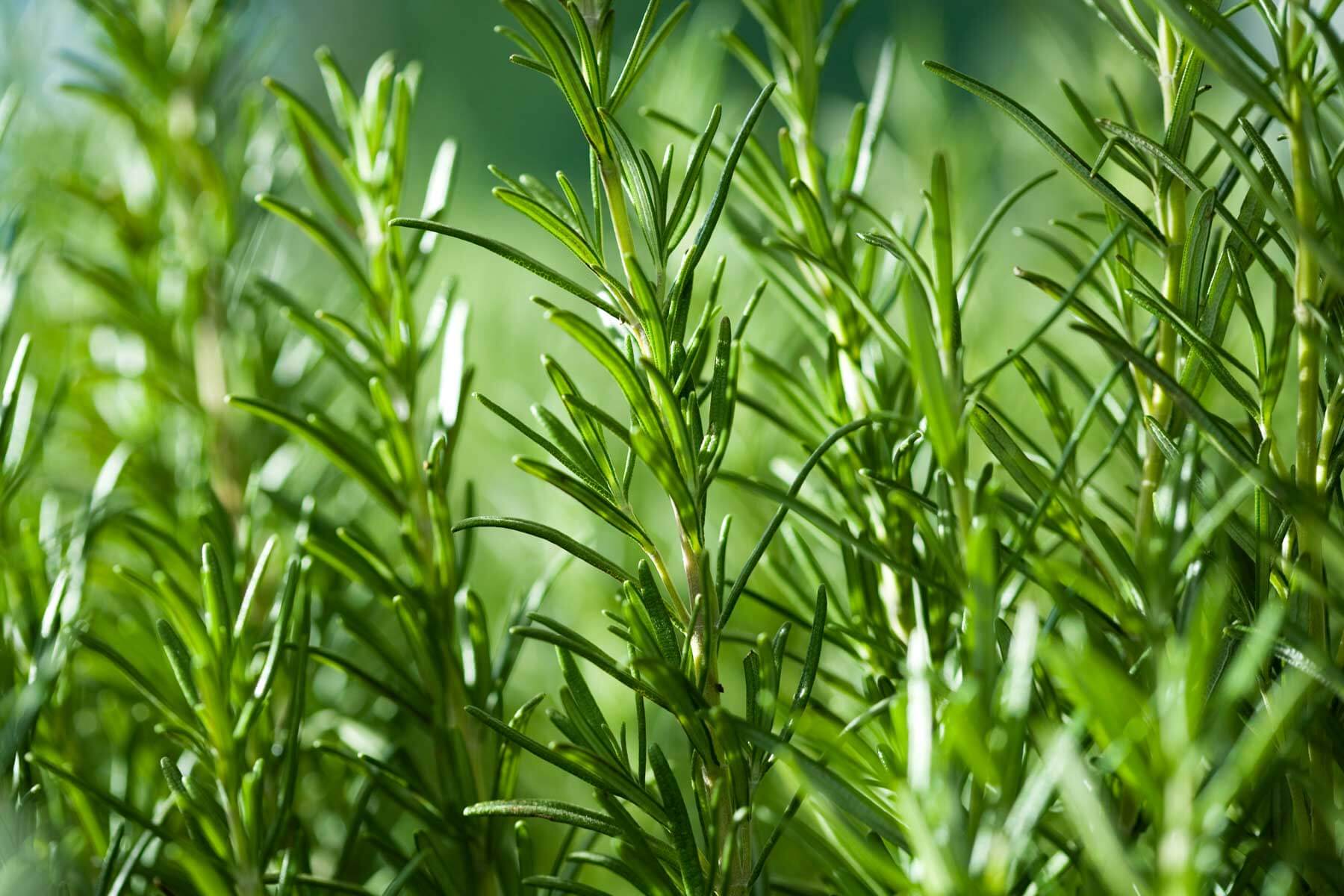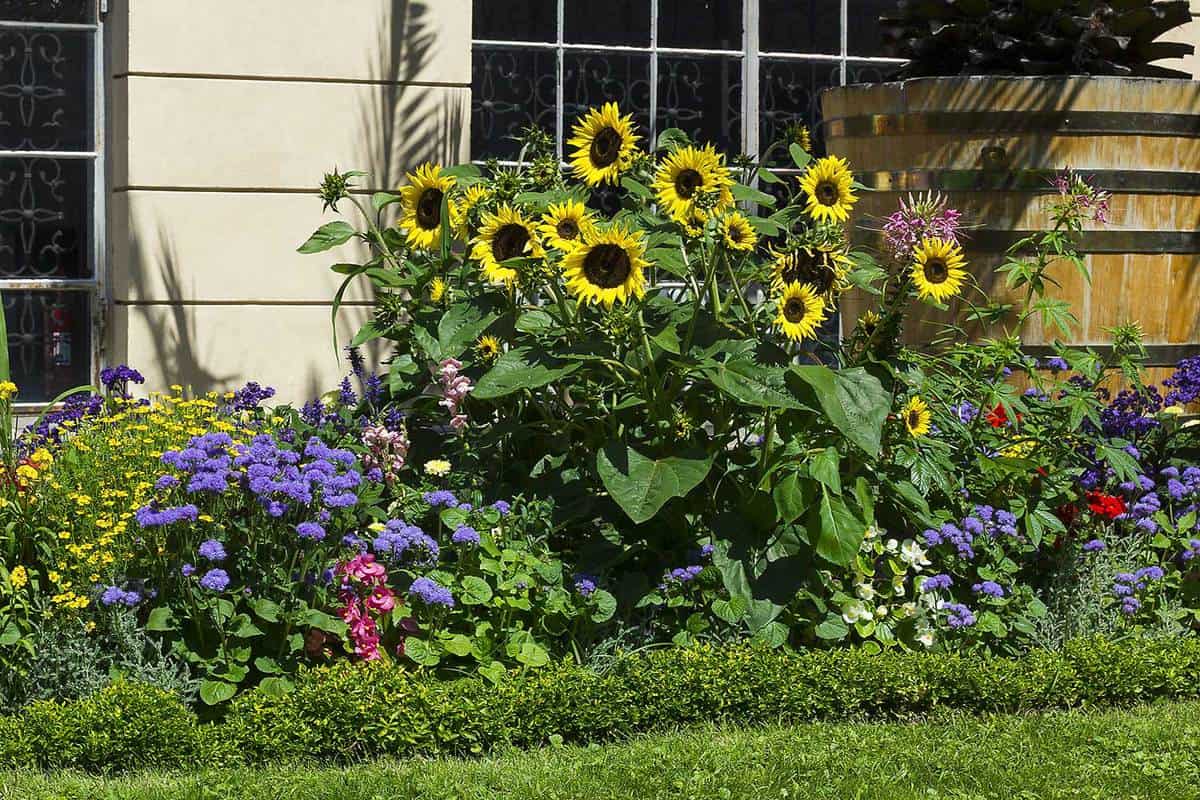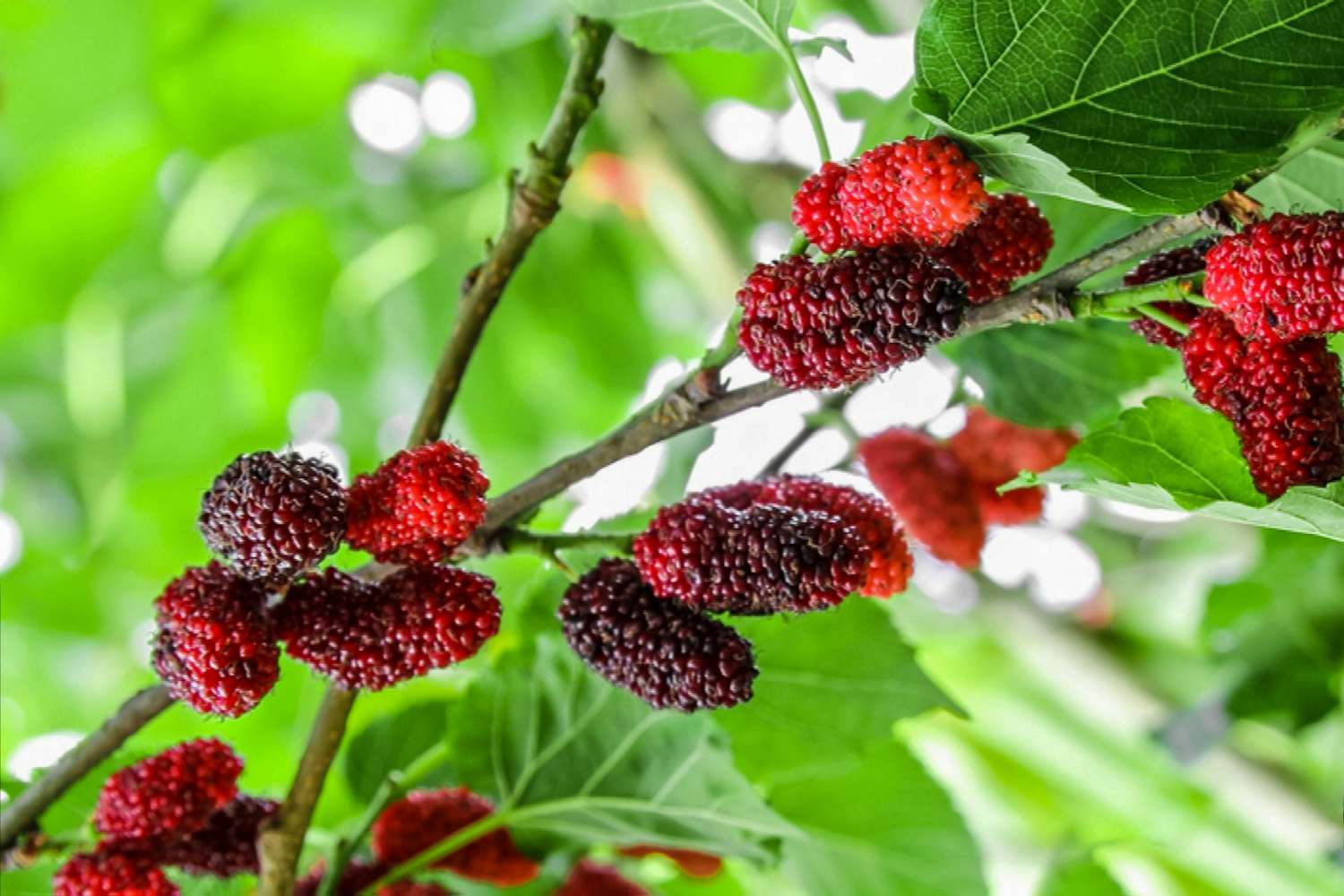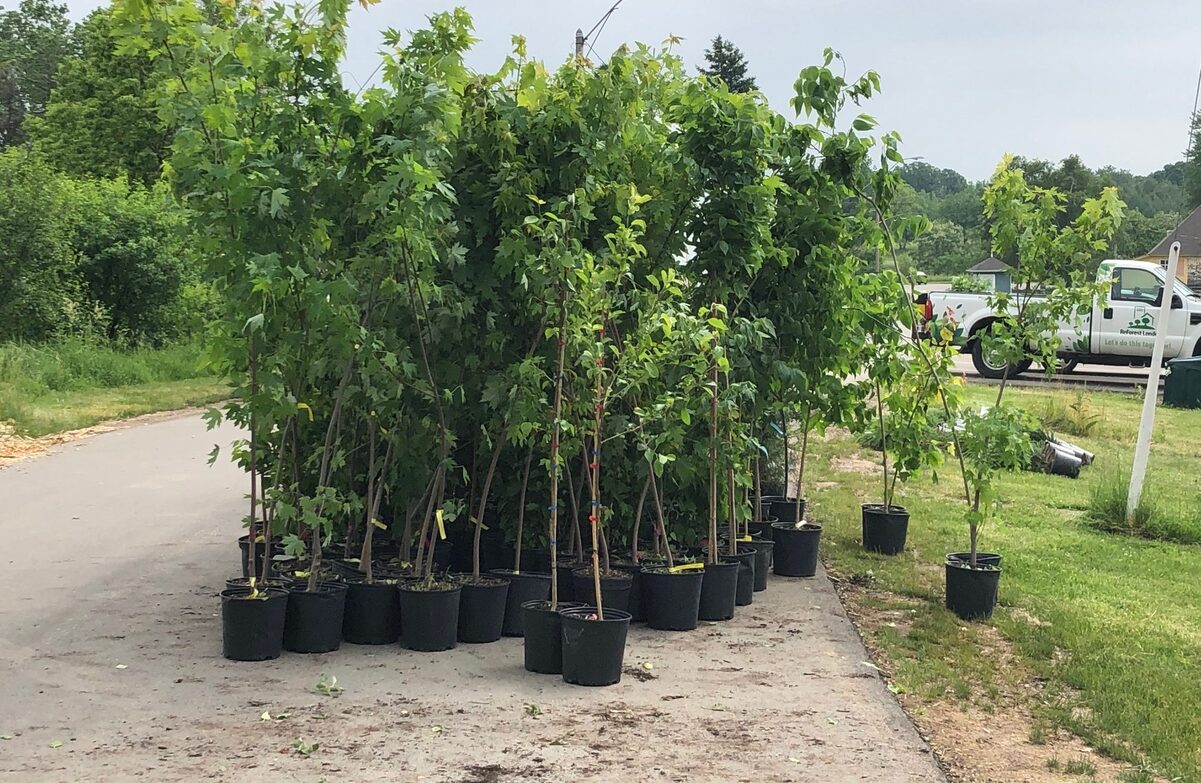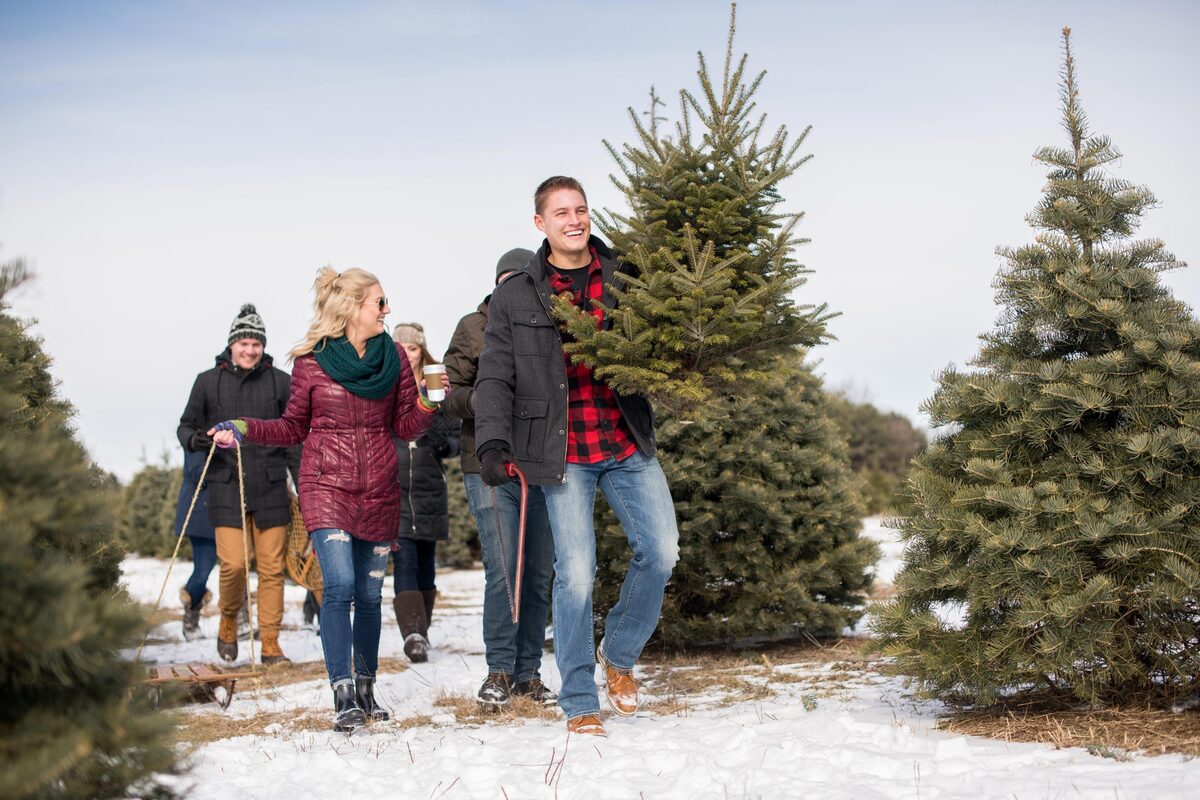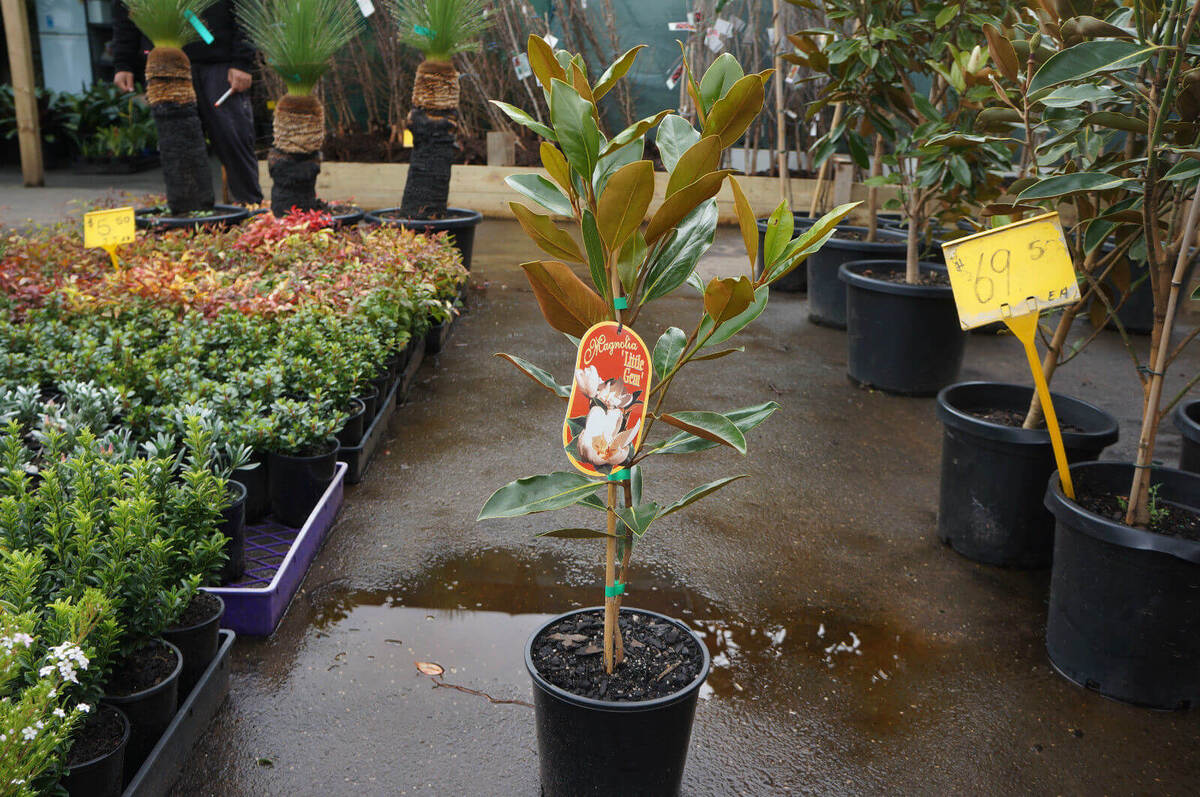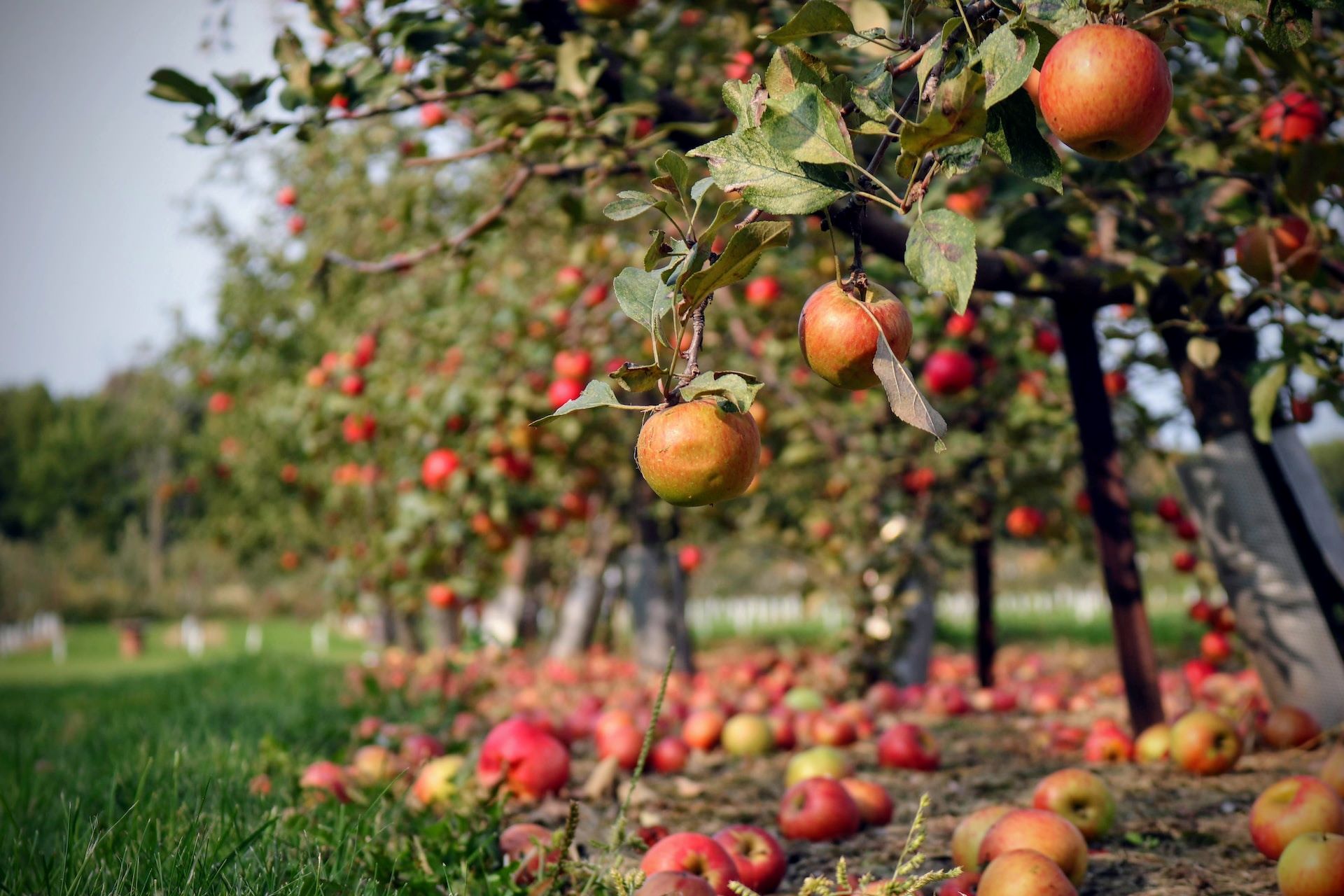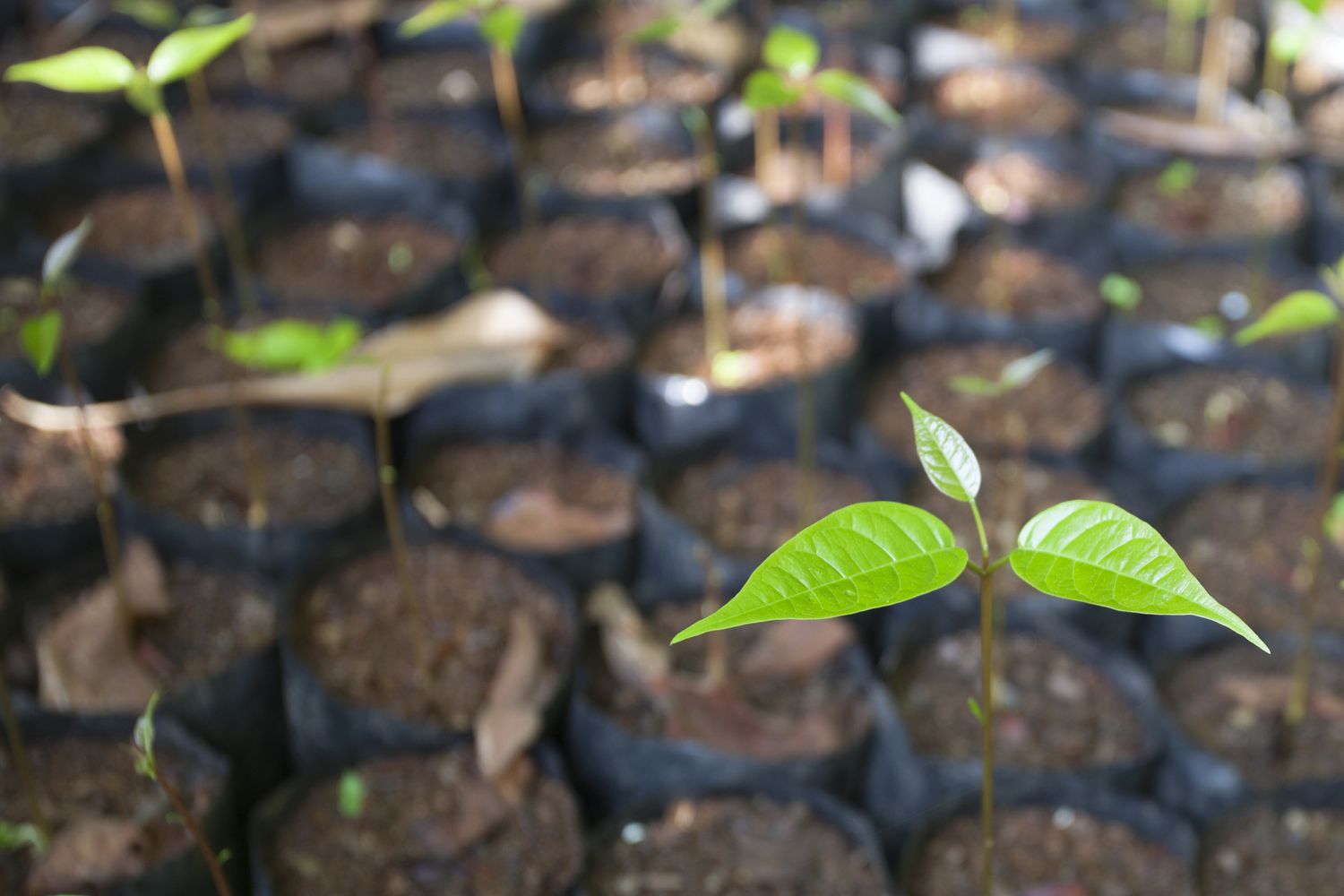Home>Gardening Techniques>Plant Care>Where To Plant Trees
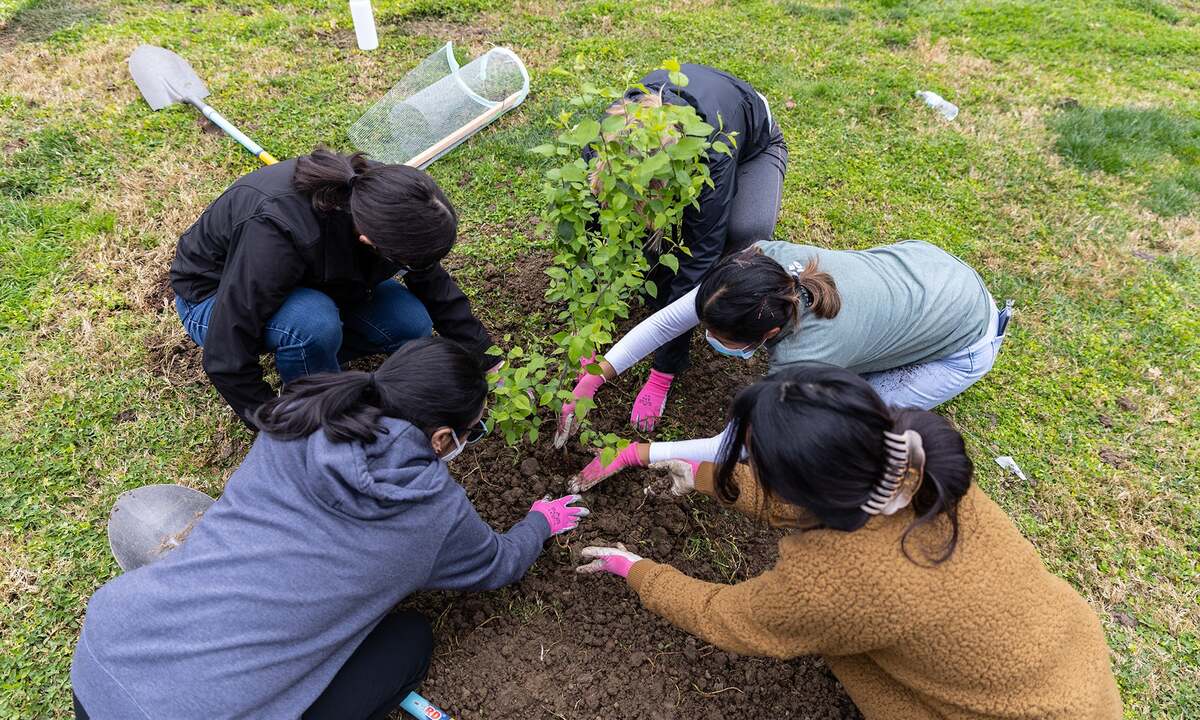

Plant Care
Where To Plant Trees
Modified: February 10, 2024
Discover the best locations to plant trees and learn essential plant care tips to ensure their healthy growth. Transform your surroundings with our expert advice on where and how to plant trees.
(Many of the links in this article redirect to a specific reviewed product. Your purchase of these products through affiliate links helps to generate commission for Chicagolandgardening.com, at no extra cost. Learn more)
Table of Contents
Introduction
Welcome to the wonderful world of plant care! Whether you are a seasoned gardener or just starting out, understanding the importance of choosing the right planting location is crucial for the health and growth of your trees. Selecting an optimal spot for planting can determine the success or failure of your tree’s development.
When it comes to planting trees, there are several factors to consider, such as sunlight, soil conditions, climate, and available space. Each tree species has unique requirements, and finding the perfect location for a specific tree can significantly impact its long-term viability. Moreover, proper planting techniques and ongoing care are essential to ensure the tree thrives and contributes to the overall beauty and health of the environment.
In this article, we will explore the factors to consider before choosing a planting location, the best locations for planting trees, the benefits and challenges of planting in urban areas, tips for selecting the right tree species, proper planting techniques, and care instructions for newly planted trees.
Whether you are interested in adding trees to your backyard, planning a community garden, or looking to enhance the green spaces in your neighborhood, this guide will provide you with the knowledge and insights needed to make informed decisions about where to plant trees and how to care for them.
By understanding the intricacies of plant care and making well-informed choices, you can create thriving ecosystems, provide shade and shelter, contribute to cleaner air, and enjoy the countless benefits that trees offer.
Factors to Consider Before Choosing a Planting Location
Before you begin planting trees, it’s important to carefully evaluate the factors that will impact the success and growth of your trees. By considering these factors, you can select the best location that provides the optimal conditions for the tree species you wish to plant.
Sunlight is a critical element for tree growth. Take note of the amount and intensity of sunlight that the proposed planting location receives throughout the day. Some tree species thrive in full sunlight, while others prefer partial shade. Understanding the specific sunlight requirements of your chosen tree species will help you determine the ideal planting spot.
Soil conditions play a vital role in the health and development of trees. Assess the soil type in the area where you plan to plant. Soil texture, drainage, and fertility are important considerations. Sandy soils drain quickly and may require more frequent watering, while clay soils retain moisture and may need amendments for improved drainage. Conducting a soil test can provide valuable information about the pH level and nutrient content of the soil, helping you select the appropriate tree species for the location.
Climate is another crucial factor to keep in mind. Different tree species have specific climate requirements. Some trees thrive in cold climates, while others prefer warmer regions. Understanding your local climate zone and determining whether the tree species you desire can withstand the temperature extremes, rainfall patterns, and seasonal variations in your area is essential for successful tree growth.
The available space also needs to be considered before choosing a planting location. Consider the mature size of the tree and ensure that there is enough space for its branches and roots to grow without obstruction. Planting too close to buildings, power lines, or other trees can lead to long-term problems and potential damage.
In addition to the physical space available, take into account any potential obstructions or barriers that may impact the tree’s growth. Consider nearby buildings, fences, underground utilities, and overhead wires that could limit the tree’s access to resources like sunlight, water, and nutrients.
By carefully considering these factors, you can ensure that the planting location is suitable for the tree species you choose. This thoughtful selection process will set the foundation for healthy and thriving trees that will enhance the beauty and sustainability of your landscape.
Best Locations for Planting Trees
Choosing the best location for planting trees is essential for their long-term success. The right spot will provide the necessary conditions for healthy growth, ensuring that your trees thrive and contribute to the overall beauty and functionality of your landscape.
One ideal location for planting trees is in open areas where they can receive ample sunlight. Most tree species require at least six hours of direct sunlight per day for optimal growth. Planting in open spaces allows the trees to fully benefit from the sun’s energy, promoting photosynthesis and the production of food and energy for the tree’s development.
Another important consideration is the aspect of the planting location. South-facing slopes receive more sunlight throughout the day, while north-facing slopes are generally shadier. Depending on the tree species and your local climate, you can use this information to strategically choose a planting location that aligns with the specific sunlight requirements of your trees.
Proximity to water sources is also crucial when selecting the best planting location. Trees need an adequate and consistent water supply to thrive. Planting near a water source, such as a river, lake, or even a strategically placed irrigation system, ensures that the trees have access to sufficient moisture for their growth and survival.
Consider the soil conditions in the designated planting location. Well-drained soils are optimal for most tree species, as they allow excess water to drain away and prevent waterlogged roots. However, some tree species, such as willows, thrive in damp conditions and can tolerate more waterlogged soils. Understanding the soil type and drainage characteristics of the location will help ensure the right tree species are chosen for the site.
Furthermore, planting trees away from potential sources of pollution is vital for their health. Avoid areas with high levels of air pollution, such as near busy roads or industrial zones. Pollution can have a detrimental impact on tree health and growth, so it’s important to choose a location with clean air to support optimal tree development.
Lastly, consider the surrounding landscape and ecosystem when choosing a planting location. Planting trees near existing vegetation, such as shrubs or other trees, can provide benefits like wind protection, shade, and a diverse ecosystem that supports wildlife. Additionally, planting trees strategically to create windbreaks or provide shade for buildings can contribute to energy savings and improve the overall microclimate of the area.
By carefully considering these factors and selecting a planting location that provides adequate sunlight, accessible water sources, suitable soil conditions, and minimal pollution, you can create an optimal environment for your trees to flourish and make a positive impact on the surrounding ecosystem.
Planting Trees in Urban Areas
Planting trees in urban areas is a rewarding and impactful way to enhance the environment, improve air quality, and create welcoming green spaces. However, urban settings pose unique challenges that need to be addressed when selecting planting locations and caring for trees in these environments.
One of the main challenges in urban areas is limited space. Urban landscapes often have restricted areas for planting due to infrastructure, buildings, and other structures. However, even in compact spaces, creative planting solutions like vertical gardens, rooftop gardens, and tree-lined streets can be implemented to maximize greenery and contribute to a healthier urban environment.
Another challenge is the presence of compacted soil and poor drainage. Urban soils are often highly compacted due to construction and heavy foot traffic. Compacted soil restricts root growth and hampers the tree’s ability to access water and nutrients. Soil amendments and proper watering techniques, such as deep watering, can help improve soil structure and promote healthy root development in urban environments.
Urban areas are also prone to pollution, including air pollution and soil contamination. Trees play a vital role in mitigating the negative impacts of urban pollution. Choosing tree species that are tolerant to pollution, such as certain varieties of oak or maple, can help improve air quality, absorb pollutants, and provide a cleaner and healthier urban environment.
When it comes to planting in urban areas, it’s crucial to consider the proximity to utilities and infrastructure. Planting trees near power lines can be dangerous and require regular trimming to prevent interference. Additionally, underground utilities, such as gas lines or water pipes, need to be considered to avoid potential damage during the planting process. Always check with local authorities or utility companies to ensure proper planting distances are maintained to prevent any safety hazards.
Community participation and involvement are key in planting trees in urban areas. Engaging with local community groups, neighborhood associations, or city initiatives can help prioritize greening projects, raise awareness about the importance of trees, and ensure ongoing care and maintenance for planted trees. Collaboration with local government agencies and urban planning departments can also help integrate tree planting efforts into long-term city plans and enhance green spaces throughout the urban landscape.
By addressing the unique challenges of urban environments and implementing thoughtful planting strategies, it is possible to create a greener, more sustainable urban environment that enhances the quality of life for residents, improves air quality, increases biodiversity, and provides shade and beauty for generations to come.
Choosing the Right Tree Species for Specific Locations
When it comes to planting trees, selecting the right tree species for a specific location is crucial for their long-term health and success. Different tree species have unique requirements in terms of sunlight, soil conditions, climate, and space. By considering these factors, you can ensure that you choose a tree species that is well-suited to thrive in the chosen location.
Start by assessing the amount of sunlight that the planting location receives. Some tree species require full sun, meaning they need at least six hours of direct sunlight per day. Others, such as shade-loving species, thrive in partial shade or areas with filtered sunlight. Carefully observe the sunlight patterns in your chosen location and select a tree species that matches the available light conditions.
Soil conditions are equally important in determining the appropriate tree species for a specific location. Different tree species have different soil preferences, ranging from well-drained soils to more water-retentive ones. Conduct a soil test to assess the pH level, nutrient content, and drainage characteristics of the soil in the planting area. This information will help you choose a tree species that is well-adapted to the existing soil conditions or take corrective measures, such as soil amendments, for better tree growth.
Consider the climate of your region when selecting tree species. Certain trees are more suited for cold climates, while others thrive in warmer, more tropical regions. Determine your local USDA hardiness zone and choose tree species that are recommended for that specific zone. These species have proven to be more tolerant of temperature extremes and climatic conditions in that area.
The available space in the planting location is another important factor to consider. Some tree species, like large shade trees, require ample space for their mature size and root systems. Planting them in small spaces or close to structures can lead to future damage. Conversely, smaller tree species or those with a compact growth habit are better suited for limited spaces, such as urban gardens or courtyards. Be mindful of the available space and choose a tree species that can adequately fit and grow in the chosen location.
It is also important to consider any specific challenges or considerations of the location, such as air pollution or salt exposure in coastal areas. Some tree species have better tolerance for these challenges and can adapt and thrive in such conditions. Research tree species that are known to be pollution-tolerant or salt-tolerant and choose accordingly to ensure the long-term health and success of the trees.
By carefully considering sunlight requirements, soil conditions, climate suitability, available space, and potential challenges, you can select the right tree species for a specific location. Choosing the appropriate tree species will ensure that the trees thrive, contribute to the ecosystem, and beautify the landscape for years to come.
Proper Techniques for Planting Trees
Planting trees properly is crucial to ensure their successful establishment and long-term health. Following the right techniques will provide the optimal conditions for the roots to grow, allowing the tree to flourish. Here are some key steps to consider when planting trees:
1. Dig the planting hole: Start by digging a hole that is wider and shallower than the root ball. The hole should be two to three times the width of the root ball and slightly shallower than the depth of the root ball. This will encourage the roots to spread out and establish themselves in the surrounding soil.
2. Improve soil drainage: If the soil in the planting area has poor drainage, consider adding organic matter such as compost to enhance its drainage capabilities. This will help prevent waterlogging and root rot, ensuring the health of the tree.
3. Loosen root ball: Gently loosen the root ball of the tree before placing it in the planting hole. This will help the roots spread out and establish in the surrounding soil more effectively.
4. Place the tree in the hole: Carefully lower the tree into the planting hole, making sure it is positioned upright and at the proper depth. The top of the root ball should be flush with or slightly above the surrounding soil level.
5. Backfill the hole: Fill the hole with soil, being cautious not to bury the trunk too deeply. Use a mixture of the excavated soil and additional compost or organic matter to provide nutrients for the tree and promote healthy growth.
6. Firmly but gently tamp the soil: Once the hole is filled, lightly firm the soil around the base of the tree to eliminate air pockets and provide stability. Avoid compacting the soil too tightly, as this can hinder root growth and soil aeration.
7. Water thoroughly: After planting, thoroughly water the tree to settle the soil and eliminate any air gaps around the roots. This initial watering is crucial to provide the tree with sufficient moisture for early establishment.
8. Mulch the tree: Apply a layer of mulch around the base of the tree, leaving a small gap around the trunk to prevent moisture buildup. Mulching helps retain soil moisture, suppresses weeds, and regulates soil temperature, benefiting the overall health of the tree.
9. Stake if necessary: In some cases, newly planted trees may require staking for support. Use soft, flexible tree ties to attach the tree to the stakes, allowing some movement for natural trunk development. Be sure to remove the stakes after the tree has established sufficient root growth.
10. Ongoing care: Proper tree care doesn’t end after planting. Regularly monitor the tree for water needs, pests, diseases, and other potential issues. Provide adequate water during periods of drought, and follow recommended pruning and maintenance practices to ensure the tree’s long-term health.
By following these proper planting techniques, you can give your newly planted trees the best chance at thriving and becoming strong, healthy additions to your landscape.
Caring for Newly Planted Trees
Proper care for newly planted trees is essential to ensure their successful establishment and long-term growth. The early stages of a tree’s life are critical, and providing the right care will help them develop strong root systems and healthy foliage. Here are some key tips for caring for newly planted trees:
1. Watering: Water the tree deeply and regularly, especially during the first year after planting. Newly planted trees have limited root systems and rely on consistent moisture to establish themselves. Water deeply to encourage deep root growth, rather than frequent shallow watering. Monitor rainfall levels and adjust watering accordingly, ensuring the soil remains consistently moist but not waterlogged.
2. Mulching: Apply a layer of mulch around the base of the tree, extending out to the drip line. This helps retain soil moisture, prevents weed growth, and regulates soil temperature. Use organic mulch like wood chips or bark, and keep it a few inches away from the trunk to prevent moisture buildup and potential rotting.
3. Pruning: In the early stages, focus on removing any dead, damaged, or crossing branches. This will help shape the tree and promote healthy growth. Avoid heavy pruning in the first year as the tree needs time to establish its root system. Save major pruning or shaping for subsequent years when the tree has become more established.
4. Protecting from pests and diseases: Monitor the tree regularly for signs of pests or diseases. Look for any unusual discoloration, wilting, or abnormal growth. If you notice any issues, consult with a professional arborist for appropriate treatments. Insecticides or fungicides may be necessary in some cases, but be sure to follow the recommended application guidelines and consider organic or environmentally friendly options when possible.
5. Fertilizing: Newly planted trees generally do not require immediate fertilization. However, if the soil conditions are poor and lacking essential nutrients, you may consider applying a slow-release fertilizer specifically formulated for trees. It’s best to have a soil test conducted to determine the nutrient needs of the tree before applying any fertilizer.
6. Pruning for structure: As the tree establishes itself, conduct structural pruning to remove any weak or poorly placed branches. This will help promote a strong and balanced tree structure. Remove any branches that are growing too close to the main trunk or crossing each other.
7. Seasonal maintenance: Adjust your care routine based on the changing seasons. Water more during dry spells or hot weather, and reduce watering during cooler, wetter periods. In winter, protect young trees from harsh winds or heavy snow loads by wrapping them with burlap or providing windbreaks if necessary.
8. Monitoring and adjusting: Regularly monitor the tree’s growth and overall health. Look for signs of stress, such as yellowing leaves, stunted growth, or wilting. Adjust your care routine as needed to address any issues that may arise.
By providing proper care and attention during the early stages of a tree’s life, you can ensure its successful establishment and encourage healthy growth. Remember that each tree species may have specific care requirements, so be sure to research and understand the needs of the tree you have planted to provide tailored care.
Conclusion
Choosing the right planting location and caring for trees are essential steps in creating a flourishing and beautiful landscape. By considering factors such as sunlight, soil conditions, climate, and available space, you can select the optimal planting location for your trees. Understanding the specific needs of tree species and implementing proper planting techniques will ensure their successful establishment and long-term health.
Whether you are planting in urban areas or suburban gardens, the challenges and benefits of tree planting are unique to each setting. In urban environments, careful consideration of limited space, soil compaction, pollution, and community involvement are necessary for successful tree planting efforts. By addressing these challenges and collaborating with local authorities and organizations, we can create greener and more sustainable urban landscapes.
Caring for newly planted trees is just as important as the initial planting. By providing adequate water, mulching, and pruning, we can support their growth, protect them from pests and diseases, and ensure their long-term stability. Taking season-specific factors into account and monitoring their health regularly allows us to adjust our care routine accordingly.
By planting and caring for trees, we contribute to the preservation of our environment and enhance the quality of life for ourselves and future generations. Trees provide shade, improve air quality, reduce erosion, and enhance the beauty and biodiversity of our surroundings. They also provide habitats for wildlife and contribute to the overall health and wellbeing of our communities.
So, let’s embrace the joy of planting and caring for trees, considering their unique needs and the specific requirements of our planting locations. With proper techniques and ongoing care, we can create a greener and more sustainable world, one tree at a time.
